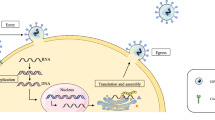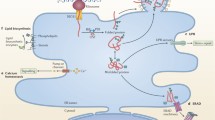Abstract.
Viral infections are serious battles between pathogens and hosts. They can result in cell death, elimination of the virus or latent infection keeping both cells and pathogens alive. The outcome of an infection is often determined by cell signalling. Viruses deliver genomes and proteins with signalling potential into target cells and thereby alter the metabolism of the host. Virus interactions with cell surface receptors can elicit two types of signals, conformational changes of viral particles, and intracellular signals triggering specific cellular reactions. Responses by cells include stimulation of innate and adaptive immunity, growth, proliferation, survival and apoptosis. In addition, virus-activated cell signalling boosts viral entry and gene delivery, as recently shown for adenoviruses and adeno-associated viruses. This review illustrates that multiple activation of host cells during viral entry profoundly impacts the elaborate relationship between hosts and viral pathogens.
Article PDF
Similar content being viewed by others
Avoid common mistakes on your manuscript.
Author information
Authors and Affiliations
Additional information
Received 13 September 2001; received after revision 23 October 2001; accepted 16 November 2001
Rights and permissions
About this article
Cite this article
Greber, U. Signalling in viral entry. CMLS, Cell. Mol. Life Sci. 59, 608–626 (2002). https://doi.org/10.1007/s00018-002-8453-3
Issue Date:
DOI: https://doi.org/10.1007/s00018-002-8453-3




